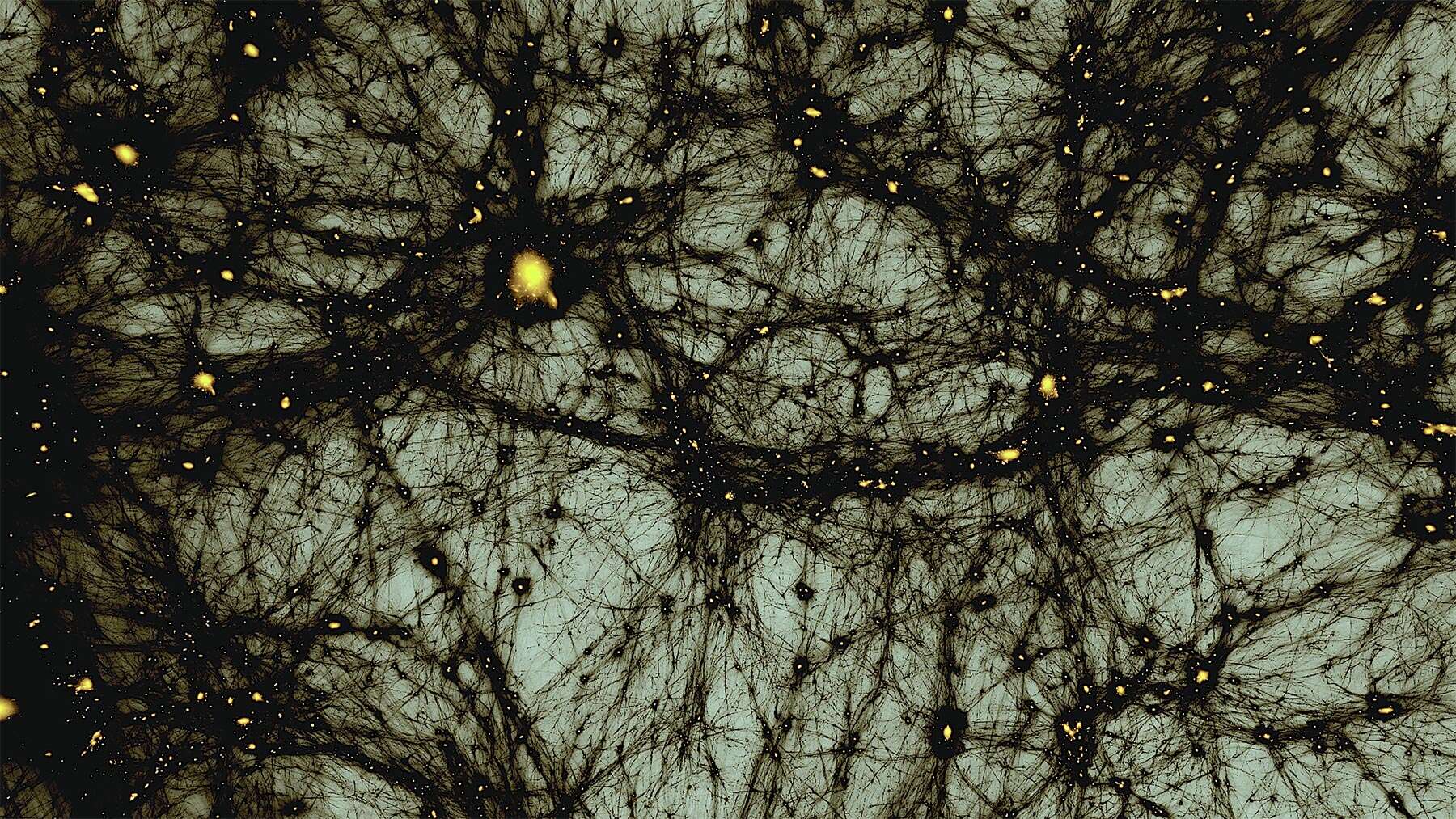Science
Dark Matter and MOND: The Ongoing Battle for Cosmology’s Future

The debate over the nature of the universe’s composition has intensified, pitting the widely accepted concept of dark matter against the alternative theory of Modified Newtonian Dynamics (MOND). Most astronomers firmly support dark matter as a crucial component of the cosmological model, while a smaller faction argues for adjustments to gravitational laws to explain cosmic phenomena. This ongoing clash highlights fundamental questions about our understanding of the universe.
As researchers continue to search for definitive evidence of dark matter, the ambiguity surrounding its composition remains a point of contention. Proponents of dark matter, including those involved in experiments like Lux-ZEPLIN and XENONnT, are optimistic that upcoming findings will solidify their theories. For example, the Lux-ZEPLIN project, based in a former gold mine in South Dakota, is investigating weakly interacting massive particles (WIMPs), which are considered primary candidates for dark matter.
Recent results from this experiment have revealed no evidence of WIMPs above a mass of 9 GeV/c², significantly tightening the constraints on dark matter theories and indicating a need for further exploration. Similarly, the XENONnT experiment in Italy is also on a quest to identify elusive dark matter particles by examining rare nuclear recoil interactions in a liquid xenon chamber.
The future of dark matter research is poised for a major development with the proposed XLZD experiment, a collaboration between Lux-ZEPLIN and XENONnT. This next-generation detector aims to provide a more sensitive search for WIMPs, potentially beginning operations by the 2030s. This experiment will be significantly larger, with a target of 40 to 100 tonnes of xenon, and is designed to leave no room for doubt regarding the existence of WIMPs.
Should the XLZD yield negative results, the implications for dark matter could be profound. Other candidates for dark matter, such as axions, are being investigated through experiments like the Forward Search Experiment (FASER) at CERN’s Large Hadron Collider. Nevertheless, the absence of WIMPs would likely open the door wider for MOND, which seeks to explain galactic dynamics without invoking dark matter.
MOND’s proponents argue that it accounts for various observed phenomena in the universe that the standard cosmological model struggles to explain. For instance, the James Webb Space Telescope (JWST) has observed unexpectedly bright early galaxies, contradicting predictions made by the lambda cold dark matter (ΛCDM) model. These findings challenge existing frameworks and suggest that the early universe may have developed under different dynamics than currently understood.
Astrophysicist Pavel Kroupa from the University of Bonn has articulated his concerns about the ΛCDM model, citing the rapid formation of massive elliptical galaxies as evidence against it. He emphasizes that if MOND is integrated into our understanding, it could reconcile many discrepancies observed within the current framework. Furthermore, he and his colleagues are developing a new theoretical model, referred to as the Bohemian model, which incorporates MOND as a foundational element.
This new approach aims to address the inconsistencies in current observations, such as the formation timescales of large-scale structures in the universe. Kroupa believes this model could provide a holistic explanation, as it aligns with the observed rapid formation of massive structures that contradict ΛCDM predictions.
Despite the push for MOND, advocates for dark matter maintain that the current model successfully explains a variety of cosmic phenomena. Stacy McGaugh, a MOND researcher, acknowledges that while both models have their strengths and weaknesses, the challenge remains to create a framework that encompasses all observations.
As the debate continues, researchers are also examining binary star systems to test the predictions of MOND. Initial studies have produced conflicting results, with some researchers finding evidence supporting MOND’s predictions in wider binary systems, while others argue against it. The resolution of this debate could significantly influence the broader discussion on dark matter and gravitational dynamics.
In conclusion, the rivalry between dark matter and MOND represents a critical juncture in cosmology. As new experiments and observational data emerge, the scientific community will be watching closely to see whether dark matter’s long-standing position will be challenged or reinforced. The quest for understanding the universe’s composition is far from over, and each new discovery brings us closer to answering fundamental questions about the cosmos.
-

 World1 week ago
World1 week agoCoronation Street’s Shocking Murder Twist Reveals Family Secrets
-

 Entertainment1 week ago
Entertainment1 week agoAndrew Pierce Confirms Departure from ITV’s Good Morning Britain
-

 Entertainment5 months ago
Entertainment5 months agoKate Garraway Sells £2 Million Home Amid Financial Struggles
-

 Entertainment4 months ago
Entertainment4 months agoAnn Ming Reflects on ITV’s ‘I Fought the Law’ Drama
-

 Entertainment1 month ago
Entertainment1 month agoCoronation Street Fans React as Todd Faces Heartbreaking Choice
-

 Health4 months ago
Health4 months agoKatie Price Faces New Health Concerns After Cancer Symptoms Resurface
-

 World1 month ago
World1 month agoBailey Announces Heartbreaking Split from Rebecca After Reunion
-

 Entertainment2 weeks ago
Entertainment2 weeks agoTwo Stars Evicted from I’m A Celebrity Just Days Before Finale
-

 World2 weeks ago
World2 weeks agoKevin Sinfield Exceeds Fundraising Goal Ahead of Final Marathons
-

 Entertainment4 months ago
Entertainment4 months agoCoronation Street’s Carl Webster Faces Trouble with New Affairs
-

 Entertainment3 months ago
Entertainment3 months agoWhere is Tinder Swindler Simon Leviev? Latest Updates Revealed
-

 Entertainment5 months ago
Entertainment5 months agoMarkiplier Addresses AI Controversy During Livestream Response

















